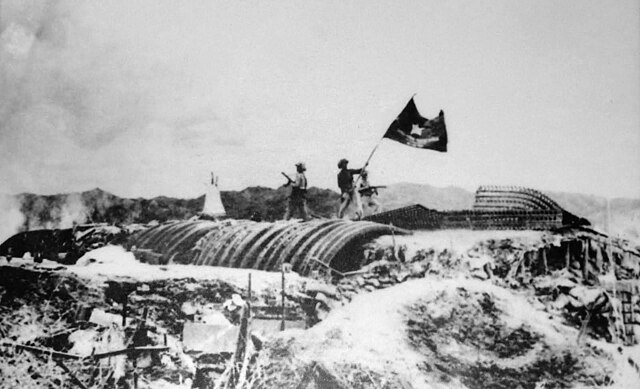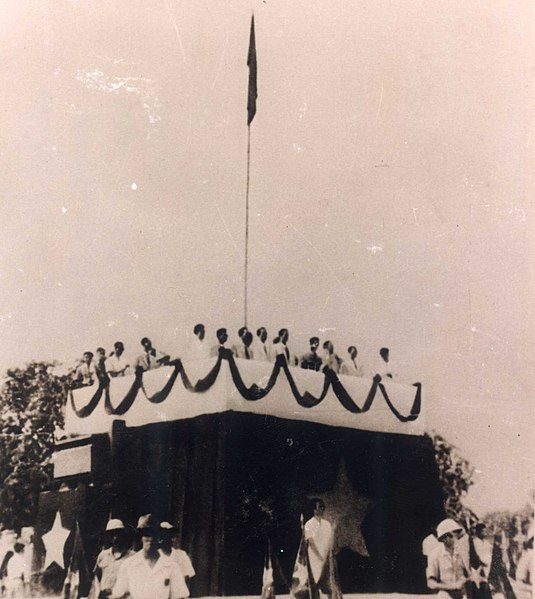The Battle of Điện Biên Phủ was a climactic confrontation of the First Indochina War that took place between 13 March and 7 May 1954. It was fought between the French Union's colonial Far East Expeditionary Corps and Viet Minh communist revolutionaries. The United States was officially not a party to the war, but it was secretly involved by providing financial and material aid to the French Union, which included CIA-contracted American personnel participating in the battle. The People's Republic of China and the Soviet Union similarly provided vital support to the Viet Minh, including most of their artillery and ammunition.
Viet Minh troops planting their flag over the captured French headquarters at Dien Bien Phu
An aerial view of the Dien Bien Phu valley in 1953
Colonel Christian de Castries, French commander at Điện Biên Phủ
Viet Minh porters on their way to the battle; thousands were used to handle supplies, food, weapons and ammunition to the besiegers
North Vietnam, officially the Democratic Republic of Vietnam, was a socialist state in Southeast Asia that existed from 1945 to 1976, with formal sovereignty being fully recognized in 1954. A member of the Eastern Bloc, it opposed the French-supported State of Vietnam and later the Western-allied Republic of Vietnam. North Vietnam emerged victorious over South Vietnam in 1975 and ceased to exist the following year when it unified with the south to become the current Socialist Republic of Vietnam.
The North Vietnamese government in 1946.
Ho Chi Minh declaring independence at Ba Dinh Square on September 2nd, 1945
A Viet Minh rally outside the Hanoi Opera House during the August Revolution, 1945.
Ho Chi Minh (seated, right) with Tôn Đức Thắng (seated, left) and other DRV leaders in a liberated zone of northern Vietnam during the First Indochina War.








